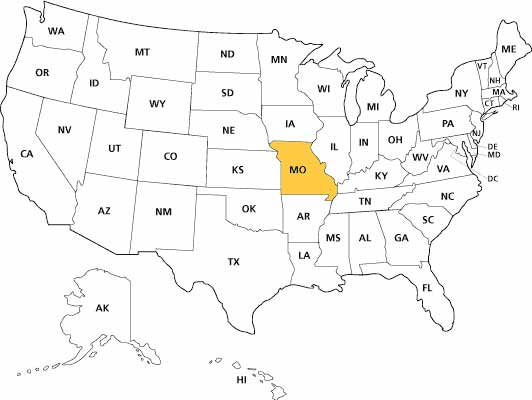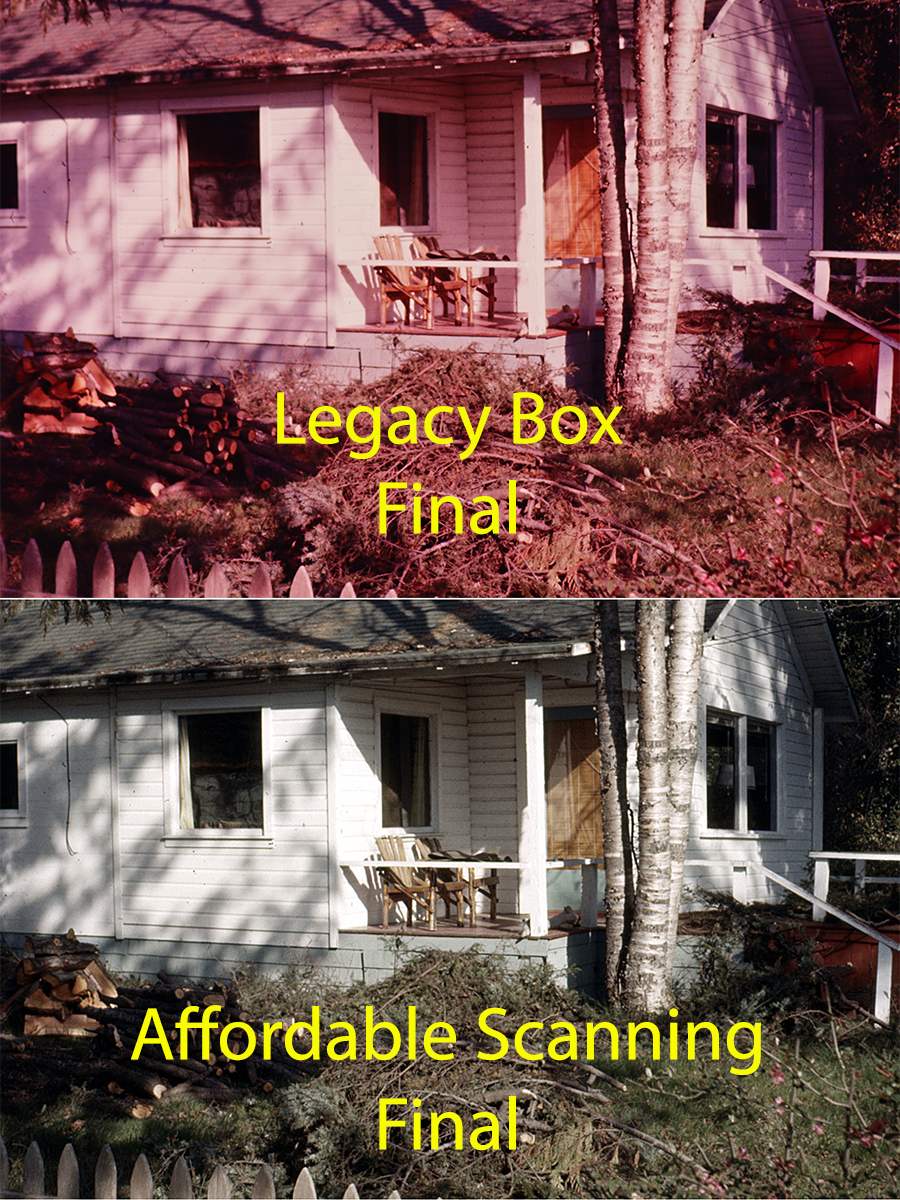Expert Slide and Photo Scanning Since 2002.
4,000 ppi Scanning and Premium Photoshop
Editing On Every Scan. Still 39¢ most slides.
We also can make PRINTS from your Slides.
www.Slides.Pics
Missouri 35mm Slide, Photo & Film Scanning

All Scanning companies will NOT give you the same results, Click Here.
While we do NOT have a local office in your state, Affordable Scanning Services LLC has provided services for customers all over Missouri, including Kansas City, St. Louis, Springfield, Independence, Columbia, Lee's Summit, St. Joseph, O'Fallon, St. Charles, St. Peter's, and the United States and Canada since 2002. In all that time we have worked with multiple people, university's and businesses with many different needs and end results. Our customers are very important to us and they are our best salespeople.
Some of the newer scanning companies, unable to compete with our services, have resorted to sending their customer's 35mm slides, photos and films to India or other third world countries. That is bad enough but what we think is really underhanded, is that they are not up front about this minor little detail. Most of their customers have no idea that their family photo collction is being loaded into a cargo plane and flown 7,000 miles over the ocean to India. And that may be the safest part of the trip.
At Affordable 35mm Slide Scanning, your job does not leave our premises,in Waupun Wisconsin, until we return ship to you. We treat your precious photo collection just like it was our own and I can tell you for certain, that we would never be sending our heirloom family photos to a thirdworld sweatshop in order to save a few dollars.
All jobs are worked by 100% USA citizens who are talented and skillful and they really are artists at heart. They work your family photos just like they were working their very own photos. We realize that this is the only time that you are going to be converting your slides and photos to digital and we are going to make it a good Experience for you.
Missouri History
"Originally part of the 1803 Louisiana Purchase, Missouri was admitted as a slave state in 1821 as part of the Missouri Compromise. It earned the nickname "Gateway to the West" because it served as a departure point for settlers heading to the west. It was the starting point and the return destination of the Lewis and Clark Expedition. River traffic and trade along the Mississippi was integral to the state's economy. To try to control flooding, by 1860 the state had completed construction of 140 miles of levees on the Mississippi.
Originally the state's western border was a straight line, defined as the meridian passing through the Kawsmouth, the point where the Kansas River enters the Missouri River. The river has moved since this designation. This line is known as the Osage Boundary. In 1835 the Platte Purchase was added to the northwest corner of the state after purchasing the land from the native tribes, making the Missouri River the border north of the Kansas River. This addition made what was already the largest state in the Union at the time (about 66,500 square miles to Virginia's 65,000 square miles (which included West Virginia at the time) even larger.
As many of the early settlers in western Missouri migrated from southern states, they brought along enslaved African Americans and a desire to continue the institution of slavery. In the early 1830s, Mormon migrants from northern states and Canada began settling near Independence and areas just north of there. Conflicts over slavery and religion arose between the 'old settlers' (mainly from the south) and the Mormons (mainly from the north and Canada). The 'Mormon War' erupted. By 1839 settlers expelled the Mormons from Missouri.
Conflicts over slavery exacerbated border tensions among the states and territories. In 1838-1839 a border dispute with Iowa over the so-called Honey Lands resulted in both states calling up militias along the border. After many incidents with Kansans crossing the Western border for attacks (including setting a fire in the historic Westport area of Kansas City), a border war erupted between Missouri and Kansas. From the 1830s to the 1860s, Missouri's population almost doubled with every decade. Most of the newcomers were Americans, but many Irish and German immigrants arrived in the late 1840s and 1850s. Having fled famine, oppression and revolutionary upheaval, they were not sympathetic to slavery.
Most Missouri farmers practiced subsistence farming. The majority of those who held slaves had fewer than 5 each. Planters, defined by historians as those holding 20 or more slaves, were concentrated in the counties known as "Little Dixie", in the central part of the state along the Missouri River. The tensions over slavery had to do with the future of the state and nation. In 1860 enslaved African Americans made up less than 10% of the state's population of 1,182,012.
After the secession of Southern states began, the Missouri legislature called for the election of a special convention on secession. The convention voted decisively to remain within the Union. Pro-Southern Governor Claiborne F. Jackson ordered the mobilization of several hundred members of the state militia who had gathered in a camp in St. Louis for training. Alarmed at this action, Union General Nathaniel Lyon struck first, encircling the peaceful camp and forcing the state troops to surrender. Lyon then directed his soldiers, largely non-English-speaking German immigrants, to march the prisoners through the streets, and opened fire on the largely hostile crowds of civilians who gathered around them. Soldiers killed unarmed prisoners as well as men, women and children of St. Louis in the incident that became known as the "St. Louis Massacre."
These events heightened Confederate support within the state. Governor Jackson appointed Sterling Price, president of the convention on secession, as head of the new Missouri State Guard. In the face of General Lyon's rapid advance in the state, Jackson and Price were forced to flee the capital of Jefferson City on June 14, 1861. In the town of Neosho, Missouri, Jackson called the state legislature into session. They enacted a secession ordinance, recognized by the Confederacy on October 30, 1861.
With the elected governor absent from his capital and the legislators largely dispersed, Union forces installed an unelected pro-Union provisional government with Hamilton Gamble as provisional governor. President Lincoln's Administration immediately recognized Gamble's government as the legal government. This decision provided both pro-Union militia forces for service within the state and volunteer regiments for the Union Army.
Fighting ensued between Union forces and a combined army of General Price's Missouri State Guard and Confederate troops from Arkansas and Texas under General Ben McCulloch. After winning victories at the battle of Wilson's Creek and the siege of Lexington, Missouri and suffering losses elsewhere, the Confederate forces had little choice but to retreat to Arkansas and later Marshall, Texas, in the face of a largely reinforced Union Army.
Though regular Confederate troops staged some large-scale raids into Missouri, the fighting in the state for the next three years consisted chiefly of guerrilla warfare. "Citizen soldiers" such as Colonel William Quantrill, Frank and Jesse James, the Younger brothers, and William T. Anderson made use of quick, small unit tactics. Pioneered by the Missouri Partisan Rangers, such insurgencies also arose in other portions of the Confederacy occupied during the Civil War. Recently historians have assessed the James brothers' outlaw years as continuing guerrilla warfare after the official war was over."
From:
https://en.wikipedia.org/wiki/Missouri
|
About Our Company Copyright 2024 |
|
Email: Click Here After hours you will get a quicker response by using email. We answer email at ALL hours. Telephone messages are replied to during business hours. Affordable Scanning Services LLC 400 Bittersweet Lane Waupun, WI 53963
|
 Home
Home Order Forms
Order Forms



